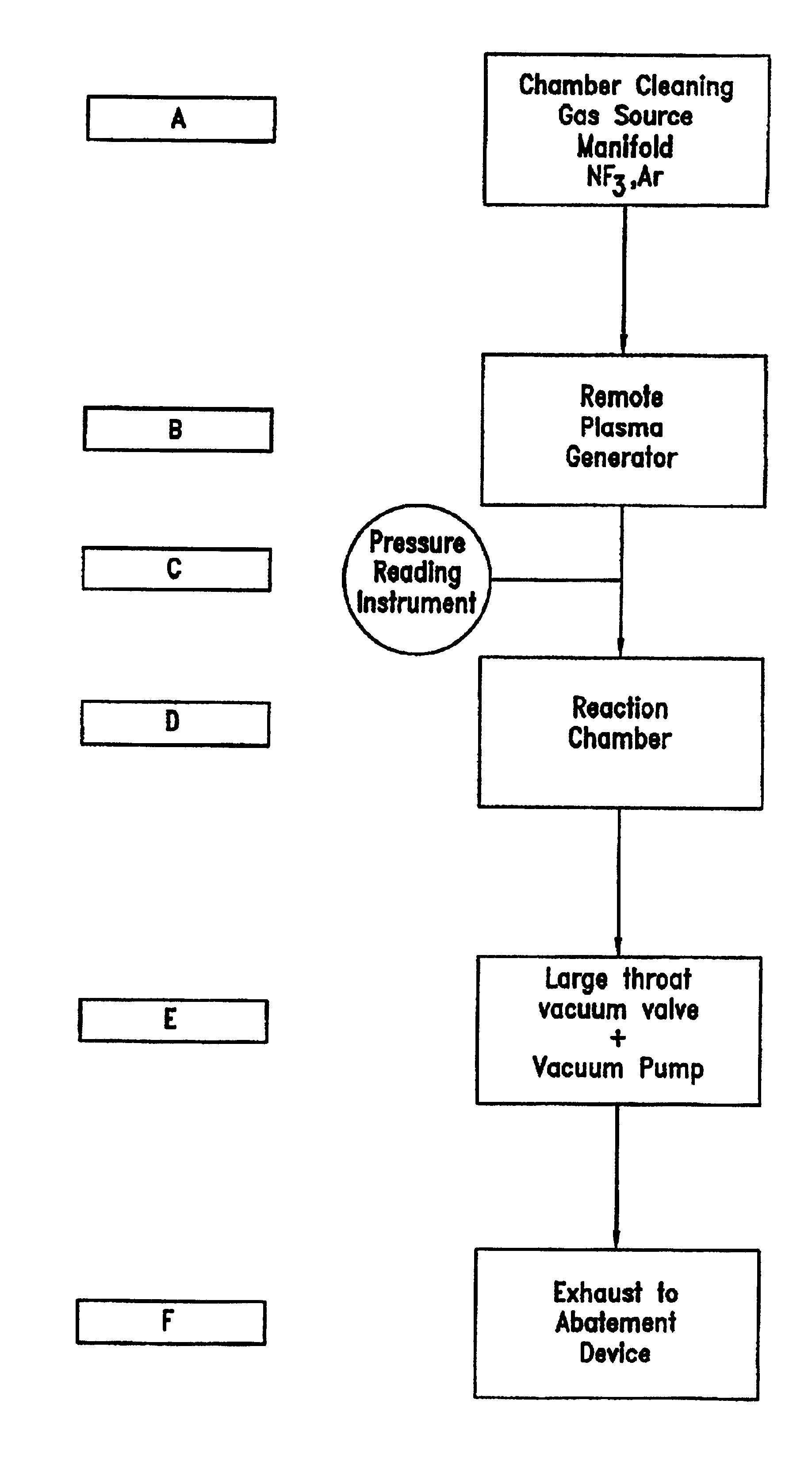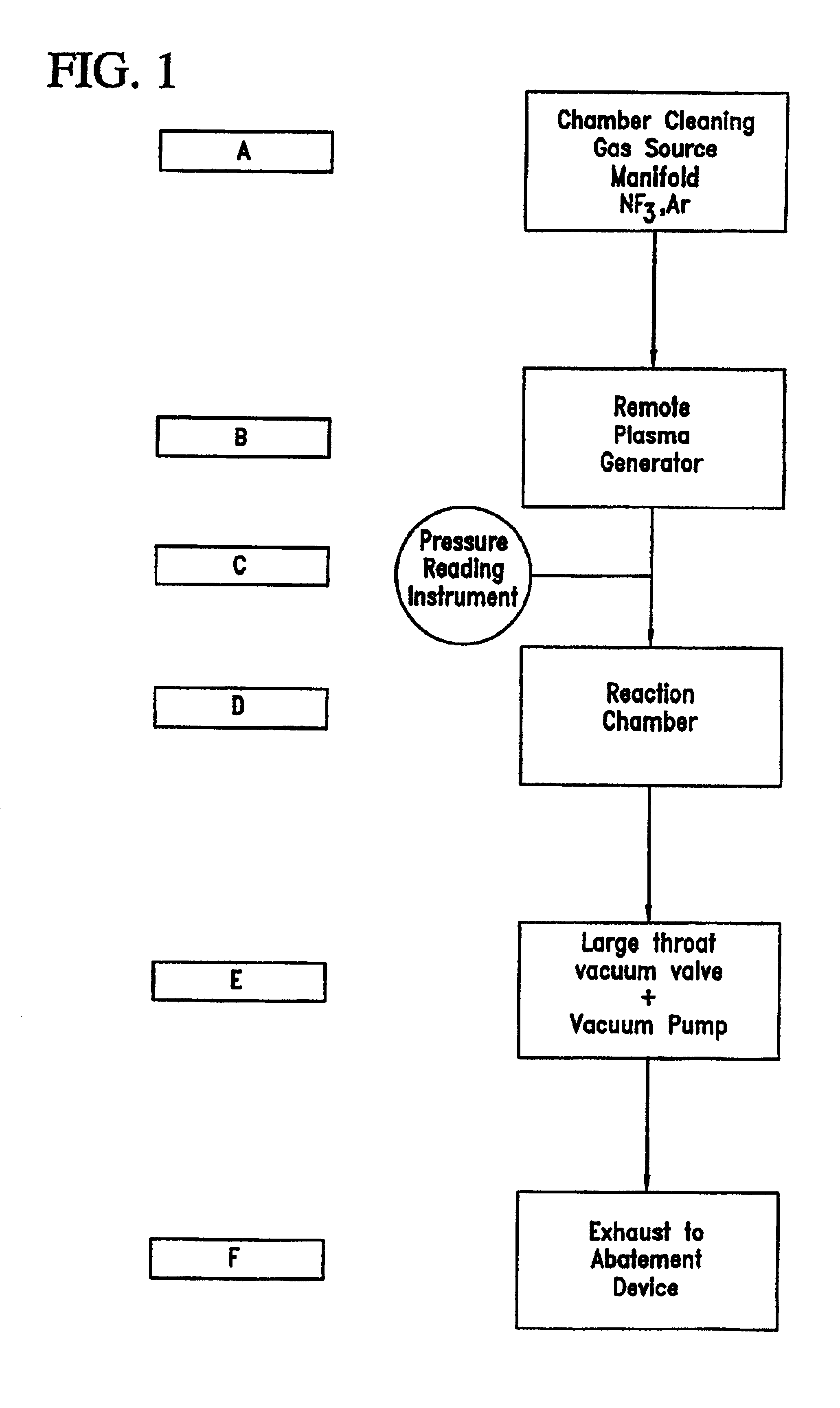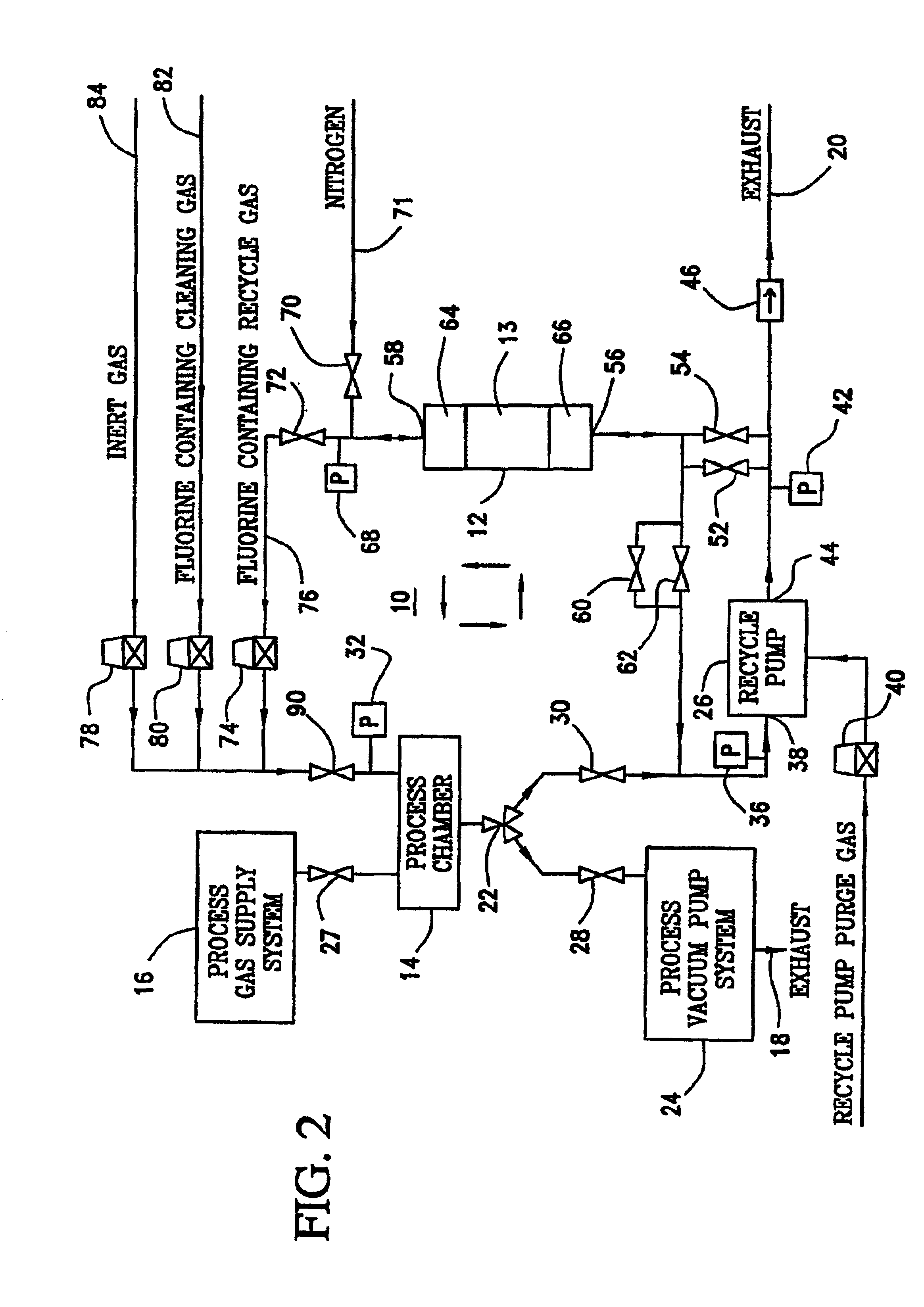Method of recycling fluorine using an adsorption purification process
a technology of fluorine and purification process, which is applied in the field of gas purification and recycling, can solve the problems of virtual global shortage of this relatively expensive material, unsuitable or unreliable use of traditional packed column separation techniques for fluorine, and increase the risk of co-deposition of impurities on target work piece surfaces such as computer chips
- Summary
- Abstract
- Description
- Claims
- Application Information
AI Technical Summary
Problems solved by technology
Method used
Image
Examples
example 1
CFx Adsorbent Formation with Pore Formation
[0058]One preferred CFx component used to make the adsorbent bed pellets of the present invention is commercially available Carbofluor™ CFx, grade 2065, (wherein x is approximately 1.15) which is manufactured as a powder by Advanced Research Chemical (ARC, Catoosa, Okla.). The PTFE component was Dyneon grade TF™ 2071, and is also manufactured as a powder. The PTFE is believed to act as a binder for the pellets. In addition, isopropanol, or FC-84, which is C7F16 (3M Company, Minneapolis, Minn.) was added to the mixture before extrusion, and was removed after extrusion by adding heat or vacuum. It is believed that the addition of the isopropanol aids in pore formation. Isopropanol was preferably added in amounts of 64 m / 100 g combined weight of the other components. The pellets were extruded with an Amandus Kahl L 175 laboratory pellet press using an Amandus Kahl (Hamburg, Germany) 3 mm die with a 9:1 pressway ratio. Table I below shows one r...
example 2
CFx Adsorbent Pellet Formation Without Pores
[0064]Another preferred adsorbent bed pellet was made using the CFx and PTFE components set forth in Example 1. However, this other preferred adsorbent formed into pellets using the equipment and protocol as set forth in Example 1, did not incorporate the isopropanol and did not require pore formation. The CFx used to make the adsorbent bed pellets of the present invention was commercially available Carbofluor™ CFx, grade 2065, (wherein x is approximately 1.15) which is manufactured as a powder by Advanced Research Chemical (ARC, Catoosa, Okla.). The PTFE component was Dyneon grade TF™ 2071, and is also manufactured as a powder. The PTFE is believed to act as a binder for the pellets. The pellets were extruded with an Amandus Kahl L 175 laboratory pellet press using an Amandus Kahl 3 mm die with a 9:1 (CFx:PTFE) pressway ratio. Table I above shows one recommended composition for the pellets of the present invention. Dyneon TF™ 2071 PTFE is...
PUM
| Property | Measurement | Unit |
|---|---|---|
| pressures | aaaaa | aaaaa |
| temperature | aaaaa | aaaaa |
| pressure | aaaaa | aaaaa |
Abstract
Description
Claims
Application Information
 Login to View More
Login to View More - R&D
- Intellectual Property
- Life Sciences
- Materials
- Tech Scout
- Unparalleled Data Quality
- Higher Quality Content
- 60% Fewer Hallucinations
Browse by: Latest US Patents, China's latest patents, Technical Efficacy Thesaurus, Application Domain, Technology Topic, Popular Technical Reports.
© 2025 PatSnap. All rights reserved.Legal|Privacy policy|Modern Slavery Act Transparency Statement|Sitemap|About US| Contact US: help@patsnap.com



